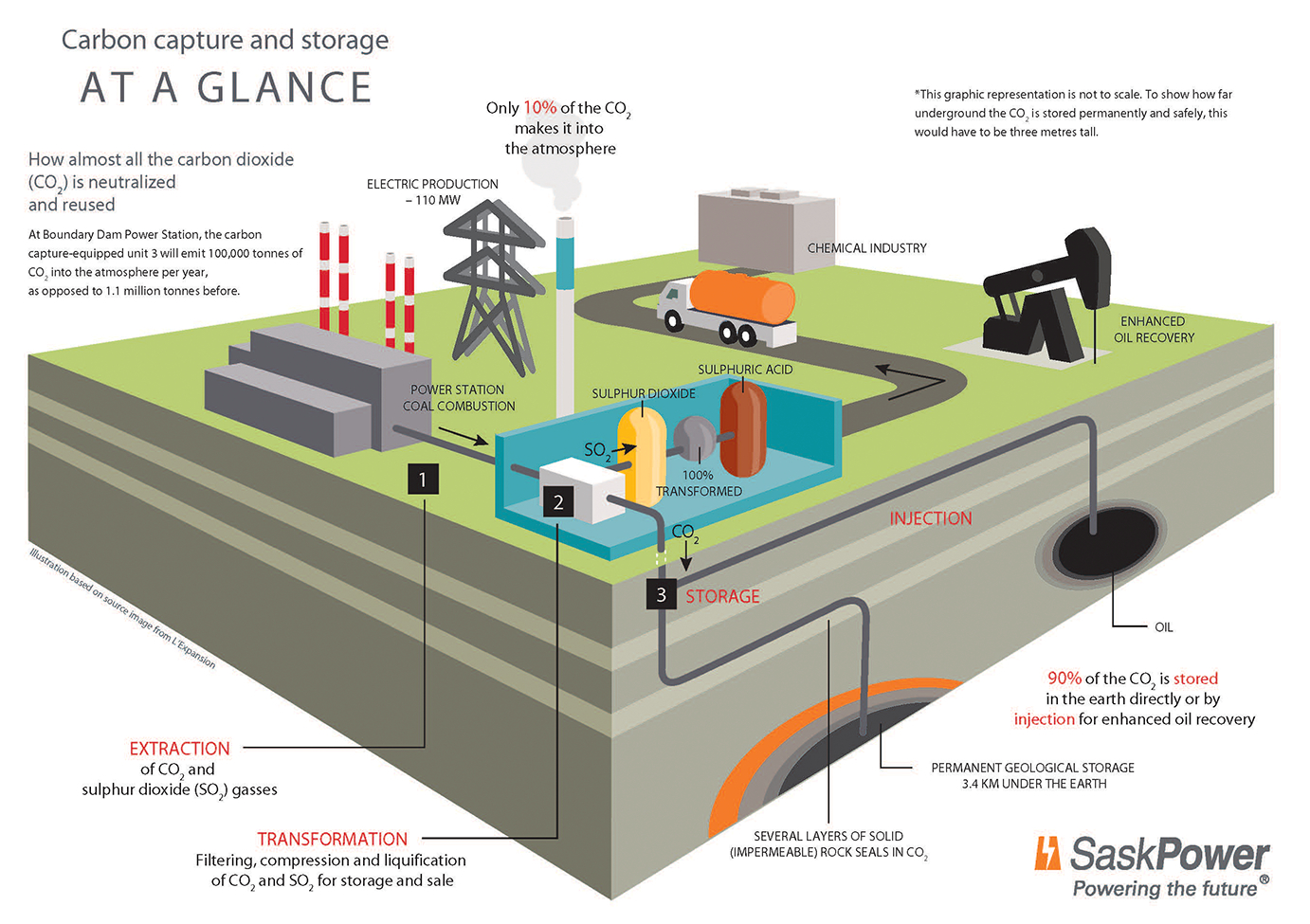Canada launches $1.25bn large-scale carbon capture and storage plant
 Canadian power utility SaskPower has unveiled the world’s first large-scale coal-fired power station equipped with carbon capture and storage (CCS) technology in the province of Saskatchewan.
Canadian power utility SaskPower has unveiled the world’s first large-scale coal-fired power station equipped with carbon capture and storage (CCS) technology in the province of Saskatchewan.
The move, hailed by the industry as a turning point in combating climate change, will help the potash-rich province to trap about 90% of its emissions, or about 1m tonnes of carbon dioxide.
Maria van der Hoeven, executive director of the International Energy Agency (IEA), said in a statement the project represents a “historic milestone” on the road to a low-carbon energy world, and should prove that capturing carbon emissions from a big coal plant is possible.
SaskPower’s project aims to demonstrate that the so-called “clean coal” technologies are feasible for conventional power plants that use the fossil fuel as a fuel in the generation of electricity.
“Carbon capture and storage is the only known technology that will enable us to continue to use fossil fuels and also decarbonise the energy sector,” the IEA executive said. “I wish the plant operator every success in showing the world that large-scale capture of CO2 from a power station is indeed not science fiction, but today’s reality.”
Countries around the world have poured over $20 billion into similar projects in recent years, in an effort to develop carbon capture and storage technologies, known as CCS.
High costs
Despite the benefits, experts say the new technology comes with a very high price tag.
“[If] you transfer the cost in terms of electricity prices, prices have to go up by 80 %,” Asian Development Bank executive Ashok Bhargava told CBC. “Nobody can afford that. So they have to come down within a level of 25 to 30%.”
Additionally, some environmental campaigners argue that the pursuit of CCS is a wasteful sideshow that will divert money from cleaner forms of renewable energy, such as wind farms, extending the coal industry’s life instead of ending it.
But experts note that one of the advantages of this technology is that it doesn’t require all new infrastructure, unlike such renewable technologies as solar and wind farms.
SaskPower’s goal is to reduce carbon dioxide emissions at its Unit # 3 power station by 90 per cent per year, or about one million tonnes of the greenhouse gas.
The project includes some $240 million in funding from the federal government.
Saskatchewan has no plans to phase out coal, which — according to SaskPower — supplies 47% of its electricity.
Images via YouTube.
{{ commodity.name }}
{{ post.title }}
{{ post.date }}






12 Comments
David_R59
Every plant on the planet is a carbon dioxide capture and storage unit.
Wouldn’t it be cheaper to give each homeowner a free tree? A few hundred thousand extra trees in Saskatchewan would probably make a huge difference to CO2 levels.
…but that wouldn’t make for a very good photo-op, would it?
JohnG
what global warming are they talking about? Are these people still live in the lala land? I pray to god that time will come when all those wasting tens of billions of (ultimately ) our monies will be prosecuted and will rot in jail.
Clarke M
One million tons of carbon dioxide is a lot. Multiply that by the life of this factory and I’d say it was worth it. Those having a trouble time wrapping their head around mass quantities of heavy heat-trapping molecules entering our atmosphere should take a chemistry class.
Redson Kajoba
Its a big kudos, Canada.
klgmac
What a terrible waste of resources.
Mark
Huge cost for a drop in the ocean.
Bobby44
As research goes this is not costly. If there is a payback by enhancing oil production – so much the better. I am not a big believer in global warming; but I do not believe we should be pumping whatever we like into the atmosphere. All aspects (including a million trees) should be tried or at least be investigated.
jamesont
This is excellent and represents a first step in dealing with CO2 emissions.
Gary S
A wast of money, volcanoes put out much more is anyone going to stop that, besides permanent storage removes the ability of plants to reclaim the oxygen. Carbon dioxide is a trace gas why, because plants need is to grow, it’s like throwing money on a shopping mall floor.
Zulugroove
Fantastic opportuntiy for Saskatchewan to show the world,it’s prowess in capture technology. Fantastic for the planet, new revenue stream for the federal government ,the province, and in turn more tax dollars for our burgeoning health care ….is there a problem here people??
Dirty Dog
The treeas that were cut down to build this facility sucked up a million tons of CO2… and they were free!! Smart Global warming, what a political joke so a few can get rich.
Wake up folks, It is a normal warming cycle we are going through…the earth is very resilent. We need to take care of her BUT, do not listen to politicians who are only after the money in your wallets. Left wing academic liberals will tell you anything if it continues to fund their worthless research
Donald Campbell
Do you know how rapidly the stored emissions will precipitate in the void spaces of the storage strata? What are the chemical reactions that will occur therein? What is the projected service life of the present storage reservoir? Do you have test records for these subjects? The answers to these questions are required in my view, if any long-term subsurface storage is considered.